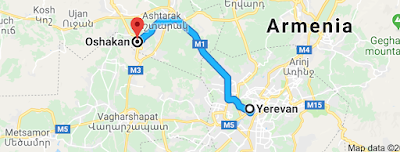Vahe H. Apelian
The first phrase: "To know wisdom and instruction; to perceive the words of understanding" (King James Version).
The first phrase: "To know wisdom and instruction; to perceive the words of understanding" (King James Version).
Tradition claims that the first phrase Mesrob Masdhots translated into Armenian, after having the heavenly divine vision for the Armenian alphabet, was the second verse of Proverb 1 that reads: "To know wisdom and instruction; to perceive the words of understanding" (King James Version). It is claimed that King Solomon, son of King David, in his old age wrote the Proverbs and the Ecclesiastes.
The translated Armenian verse, quoted above, used to be printed on the cover of some of our notebooks when I attended Sourp (Saint) Nshan Armenian school. On the cover of the notebook there was also a drawing of Mesrob Mashdods looking upward and from the upper left corner of the notebook cover, lines descended towards him giving the impression of heavenly inspiration. Tradition also claims that young monk Mesrob Mashdots, had a heavenly vision where the 36 characters of the Armenian Alphabe were revealed to him. Two other characters were added later on bringing it to the 38 characters we have now.
For decades I never found out the actual verse of that quote but I remained impressed by the profound message it conveyed. The Armenian Evangelical schools in Lebanon have the quote as their motto. Whenever I came across the quote, it was presented without making reference to its Biblical source. And when I found out that it is Proverb 1:2 and read it, I felt disappointed. The very first Armenian translated phrase in Krapar (classical Armenian) is so profound, so beautiful, that it was a disappointment for me to read it not only in English but also in vernacular Armenian. As far as I am concerned the vernacular Armenian translation of the Bible that came about because of the Evangelical movement among us in the 19th century is a poor translation of the Bible. It appears to have been done in haste. Now, much like in English, there are different versions of the Bible in Armenian but the the Classical Armenian (Krapar) translation of the Bible is pristine and has remained unchanged.
The Armenians translated the Bible in 405 AD, right after they came out with their own characters. The translation is in Krapar, classical Armenian. I can read Krapar but I cannot write in Krapar for it has its own grammatical rules and verb tenses and distinct usage of words. Linguists, both Armenian and none Armenian alike, claim that the original Armenian translation of the Bible, which the Armenian Apostolic Church uses to this day, is so beautifully done that it is called the "Queen of the Translations" (Թագուհի Թարգմանչաց).
There is an Italian saying that claims "Translator, (is) traitor". But the Armenian Apostolic Church has canonized the early translators and to this day observes The Feast of the Holy Translators (Սուրբ Թարգմանչաց տօն, Sourp Targmanchats don).
Nowadays the overwhelming majority of us do not read and write in Armenian character. Most of us read in the language of the larger society of the countries we reside be it in English, French, Russian, Arabic and many others. There is a great need for modern-day translators. This time around to translate Armenian literary works into the other languages we speak. One can safely say that our written culture is founded on translated literary works and will perpetuate on translated Armenian literary works as well.
As to the young monk Mesrob Mashdots, who translated the very first sentence into Armenian, was canonized and hence he is considered a saint and is buried in a chapel in Oshagan (Oshakan) in Armenia, some 17 miles north-west of Yerevan.




No comments:
Post a Comment